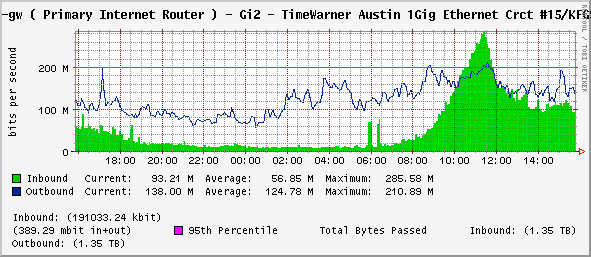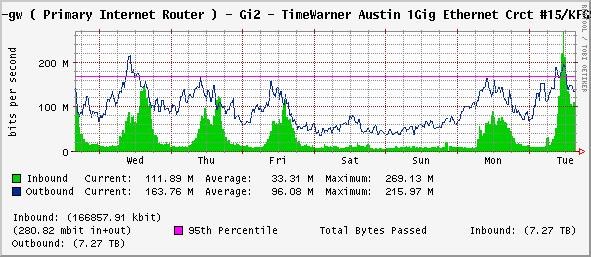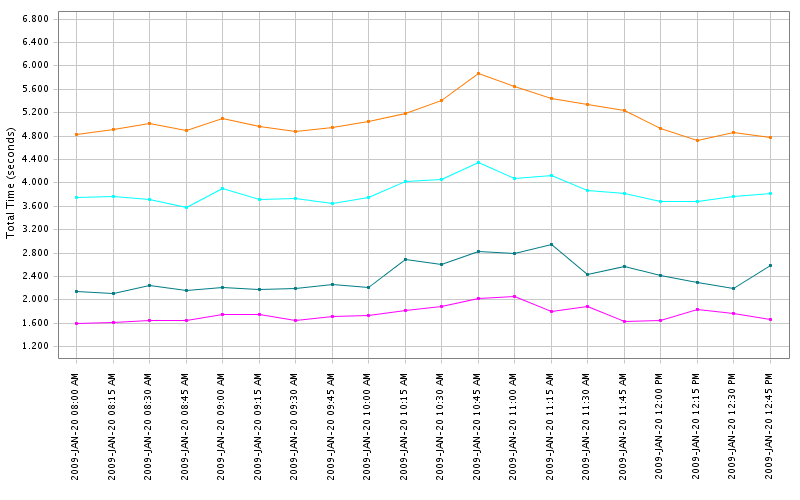A DoS We Can Believe In
We knew that the historic inauguration of Barack Obama would be generating a lot more Internet traffic than usual, both in general and specifically here at NI. Being prudent Web Admin types, we checked around to make sure we thought that there wouldn’t be any untoward effects on our Web site. Like many corporate sites, we use the same pipe for inbound Internet client usage and outbound Web traffic, so employees streaming video to watch the event could pose a problem. We got all thumbs up after consulting with our networking team, and decided to not even send any messaging asking people to avoid streaming. But, we monitored the situation carefully as the day unwound. Here’s what we saw, just for your edification!
Our max inbound Internet throughput was 285 Mbps, about double our usual peak. We saw a ni.com Web site performance degradation of about 25% for less than two hours according to our Keynote stats. ni.com ASPs were affected proportionately which indicates the slowdown was Internet-wide and not unique to our specific Internet connection here in Austin. The slowdown was less pronounced internationally, but still visible. So in summary – not a global holocaust, but a noticeable bump.
Cacti graphs showing our Internet connection traffic:


Keynote graph of several of our Web assets, showing global response time in seconds: Looking at the traffic specifically, there were two main standouts. We had TCP 1935, which is Flash RTMP, peaking around 85 Mbps, and UDP 8247, which is a special CNN port (they use a plugin called “Octoshape” with their Flash streaming), peaking at 50 Mbps. We have an overall presence of about 2500 people here at our Austin HQ on an average day, but we can’t tell exactly how many were streaming. (Our NetQoS setup shows us there were 13,600 ‘flows,’ but every time a stream stops and starts that creates a new one – and the streams were hiccupping like crazy. We’d have to do a bunch of Excel work to figure out max concurrent, and have better things to do.)
Looking at the traffic specifically, there were two main standouts. We had TCP 1935, which is Flash RTMP, peaking around 85 Mbps, and UDP 8247, which is a special CNN port (they use a plugin called “Octoshape” with their Flash streaming), peaking at 50 Mbps. We have an overall presence of about 2500 people here at our Austin HQ on an average day, but we can’t tell exactly how many were streaming. (Our NetQoS setup shows us there were 13,600 ‘flows,’ but every time a stream stops and starts that creates a new one – and the streams were hiccupping like crazy. We’d have to do a bunch of Excel work to figure out max concurrent, and have better things to do.)
In terms of the streaming provider breakdown – since everyone uses Akamai now, the vast majority showed as “Akamai”. We could probably dig more to find out, but we don’t really care all that much. And, many of the sources were overwhelmed, which helped some.
We just wanted to share the data, in case anyone finds it helpful or interesting.

Leave a Reply